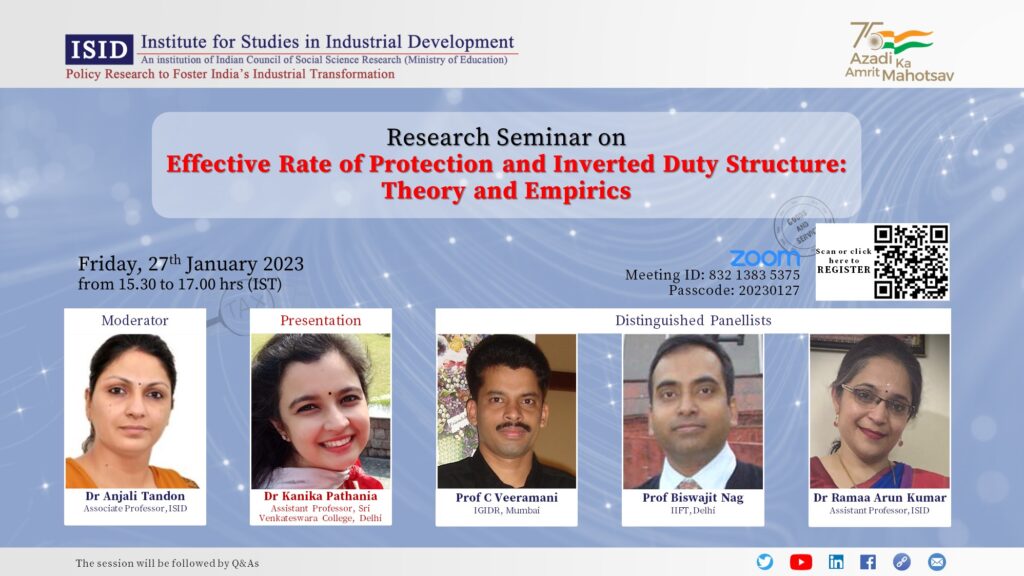Due to unavoidable circumstances, the scheduled research seminar for tomorrow, is postponed. The rescheduled programme will be intimated accordingly.

Click here to REGISTER
Abstract: Indian industrialists have been complaining that the country’s tariff structure has resulted in an inverted duty structure or IDS (i.e., higher tariffs on inputs compared to outputs), leading to lower profitability. Traditional trade theory uses the concept of effective rate of protection (ERP) in such a scenario. If the ERP remains positive for an industry despite IDS, then the latter may not affect the industry badly as the structure of tariff is still giving some positive protection. However, if ERP becomes negative, then industry is better off under free trade than under restricted trade. This paper makes one of the first attempts to check: a) theoretically if there are any specific conditions that make tariff rates supporting IDS an optimal policy solution while maximizing a country’s social welfare, even if it leads to negative ERP. We use an international oligopoly framework with two countries (home and foreign) and two vertically related goods (a final good and an intermediate input), situated in a three-stage game, to answer our research question. Depending upon various parametric configurations, our model suggests that there do exist such optimal rates of input and output tariffs that could lead to IDS in an economy, and negative ERP as well. However, this does not imply that IDS always coincides with negative ERP. In fact, we show that ERP for an industry may remain positive despite IDS, meaning thereby the latter may not adversely affect that industry because the tariff structure is still giving it protection. However, it is a completely different matter if the effective rate of protection for an industry turns out to be negative due to IDS. b) empirically offers new estimates of ERP for the period 2000–2014. In this part, we argue that the concept of effective rate of protection (ERP), despite its limitations in the context of general equilibrium theory, provides an appropriate tool for analysing this issue. We then offer new estimates of ERP for the period 2000–2014 using a data source that, unlike those used by earlier authors, enables us to construct a time series on ERP for each sector, using different tariff rates applied by India on imports from different countries. We find many instances of IDS but none of them results in negative ERP. Cases of negative ERP are found in a few sectors and years for which the counterfactual value added under free trade is negative. We discuss some possible explanations for this phenomenon. Finally, we show statistically and econometrically that, in line with theoretical expectations, ERPs are positively related to the degree of tariff escalation.

